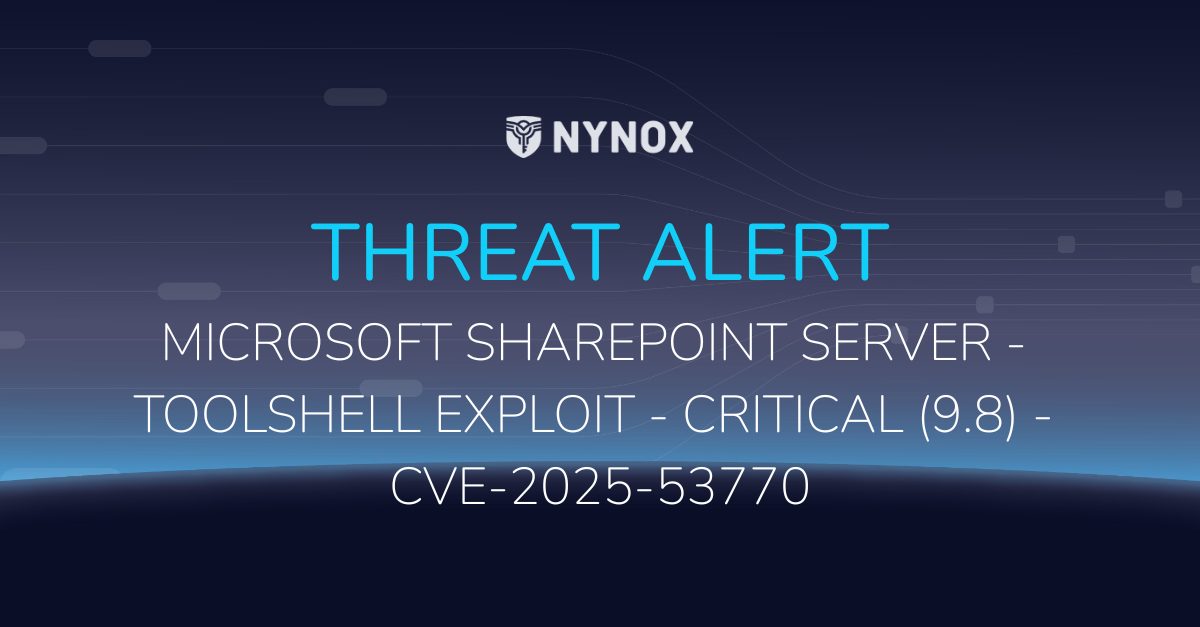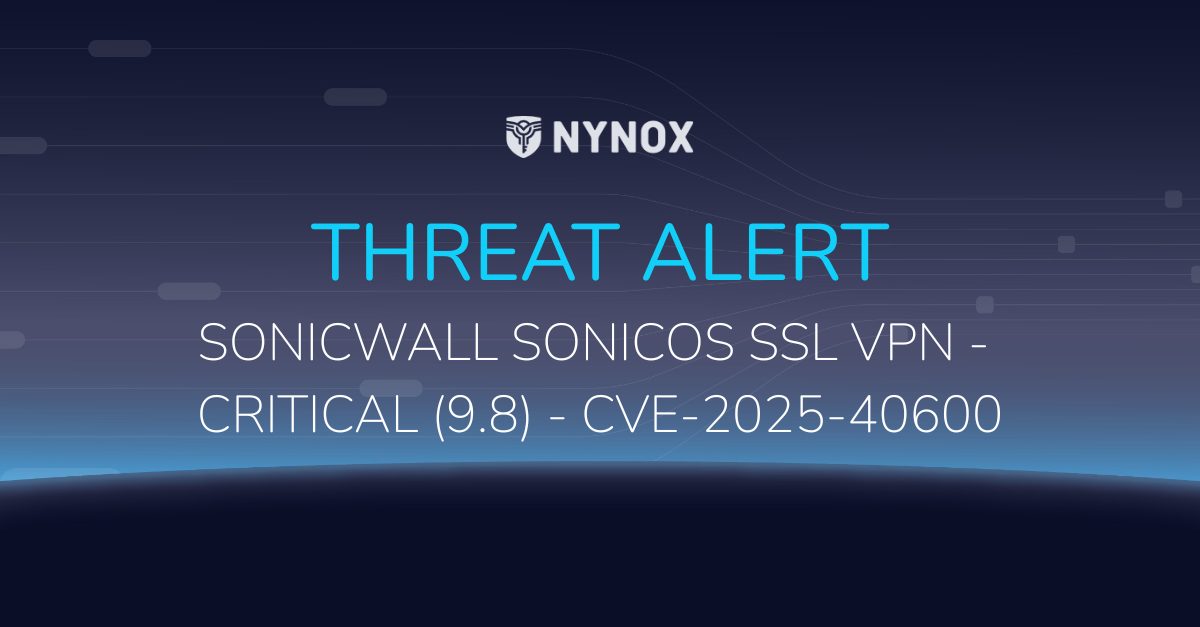– Date: 22nd of July –
📢 Threat Alert – Microsoft SharePoint – 🚨 Critical Security Alert! 🚨
Don’t let CVE-2025-53770 slip through the cracks. A critical vulnerability is being actively exploited as part of the ToolShell campaign. This affects on-premise SharePoint servers only. Here’s how to protect your SharePoint environment! 🔐📌
What’s going on?
⚠️ This vulnerability stems from the deserialization of untrusted data, allowing a remote, unauthenticated attacker to execute arbitrary code over the network.
⚠️ It is actively being exploited in the wild as part of a known campaign called ToolShell.
⚠️ Affected products and versions:
| Product | Affected Version | Mitigation |
| Microsoft SharePoint Server Subscription Edition | Versions before (<) 16.0.18526.20508 | Apply Security Update KB5002768 |
| Microsoft SharePoint Server 2016 | Versions before (<) 16.0.5513.1001 | Apply Security Update KB5002760 |
| Microsoft SharePoint Server 2019 | Versions before (<) 16.0.10417.20037 | Apply Security Update KB5002754 |
Why is this a problem?
❗ The vulnerability enables remote code execution without authentication, attackers don’t need credentials to get started.
❗ Since it is being actively exploited, organizations are at immediate risk, especially if security patches are not applied.
❗ Once exploited, threat actors may attempt to escalate privileges, move laterally, and exfiltrate data from your network.
How does Nynox protect its customers?
🔹 Free threat hunting based on ToolShell campaign IOCs.
🔹 Custom detection scenarios across logs (Windows, Firewalls, M365, etc.).
🔹 24×7 Incident Response (CSIRT) availability.
🔹 24×7 monitoring of SharePoint environments.
🔹 If you’re using SentinelOne via Nynox, our XDR helps block many of these attack techniques.
What can you do to mitigate the attack?
✅ Apply the latest SharePoint patches based on your version.
✅ Reference Microsoft’s official updates: KB5002768, KB5002760, KB5002754.
✅ Review system and application logs for available indicators.
But what if you can’t?
🛡️ Isolate vulnerable systems from the internet and limit exposure.
🛡️ Use network security controls (VPN, firewall rules).


